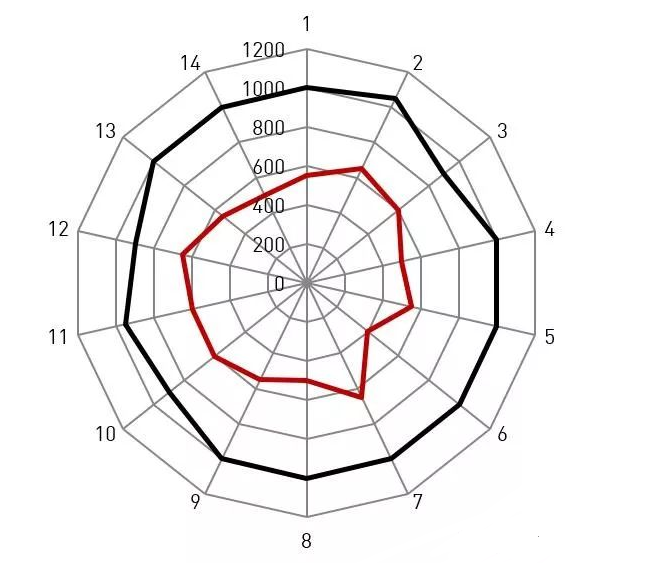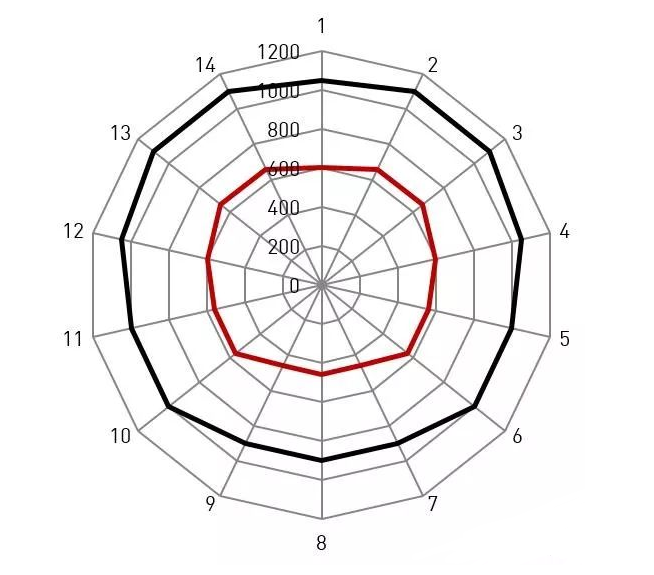Why is spoke tension on a wheel so important?
Spoke tension is a growing concern among wheel builders. The most pressing concerns regarding spoke tension are its magnitude and uniformity.
Spoke tension alone, hidden within the wheel, ensures wheel durability, precise steering, swift acceleration, and powerful braking. The art of wheel building lies in maintaining spoke tension within a reasonable range to maximize performance. It's not simply a matter of whether higher is better. At the same time, the differences between spokes must be minimized.

The image above shows the spoke tension of 28 spokes without a tire installed. Black represents the drive-side spoke tension, and red represents the non-drive-side spoke tension. On the spider web behind, the tension difference between each turn is 200N, which translates to about 20kgf (kilogram-force). You can see how little variation there is between the spokes.

This image shows how the spoke tension on the wheel is affected by the tire pressure after the tire is installed. The overall spoke tension is reduced, but the difference between the spokes is not significant.

This image shows the same wheelset, but now with a tire installed and a rider in a static position. You can clearly see that the spoke tension in the top half of the wheel has increased, while the spoke tension in the bottom half has decreased. This is because spokes only act as tension in a wheel, not as support. When weight is added to the wheel, the spoke tension in the top half increases.
So, when it comes to wheels, bigger isn't always better. Factory-built wheels typically have different spoke tension settings based on the wheel's intended use and the specific spokes used. Most often, the spoke tension is set somewhere in the middle or just above the maximum acceptable tension. This is primarily to accommodate a wide range of user needs. Handmade wheels, on the other hand, offer greater flexibility, allowing for a more precise spoke tension based on individual usage scenarios, riding habits, weight, and other factors.
